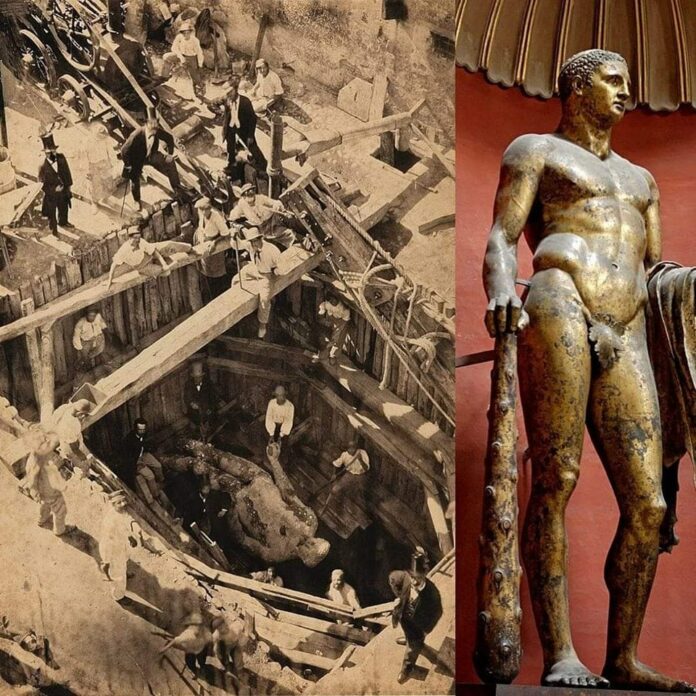The moment when the 4-meter-tall, 2,000-year-old gigantic Hercules statue was discovered in 1864 and its current state in the Vatican Museum.

On a morning in August 1864, in the courtyard of Palazzo Pio Righetti in Campo de’ Fiori, Rome, a group of workers under the direction of architect Luigi Gabet encountered something extraordinary.
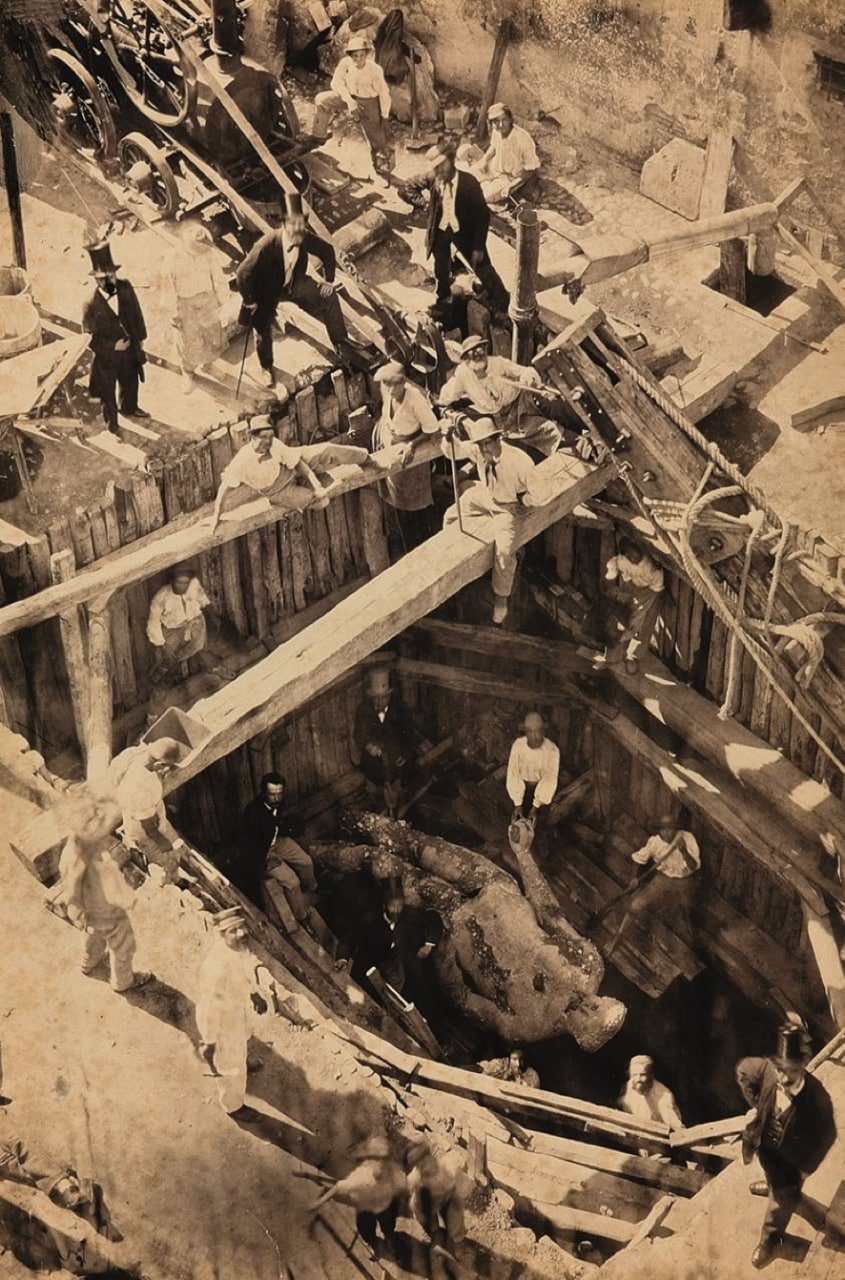
When a bronze finger slowly emerged from the earth, they had no idea they had discovered a valuable historical monument. Just twenty days later, at a depth of about 8-9 meters, the entire bronze statue of Hercules was brought to light, marking an important historical discovery.
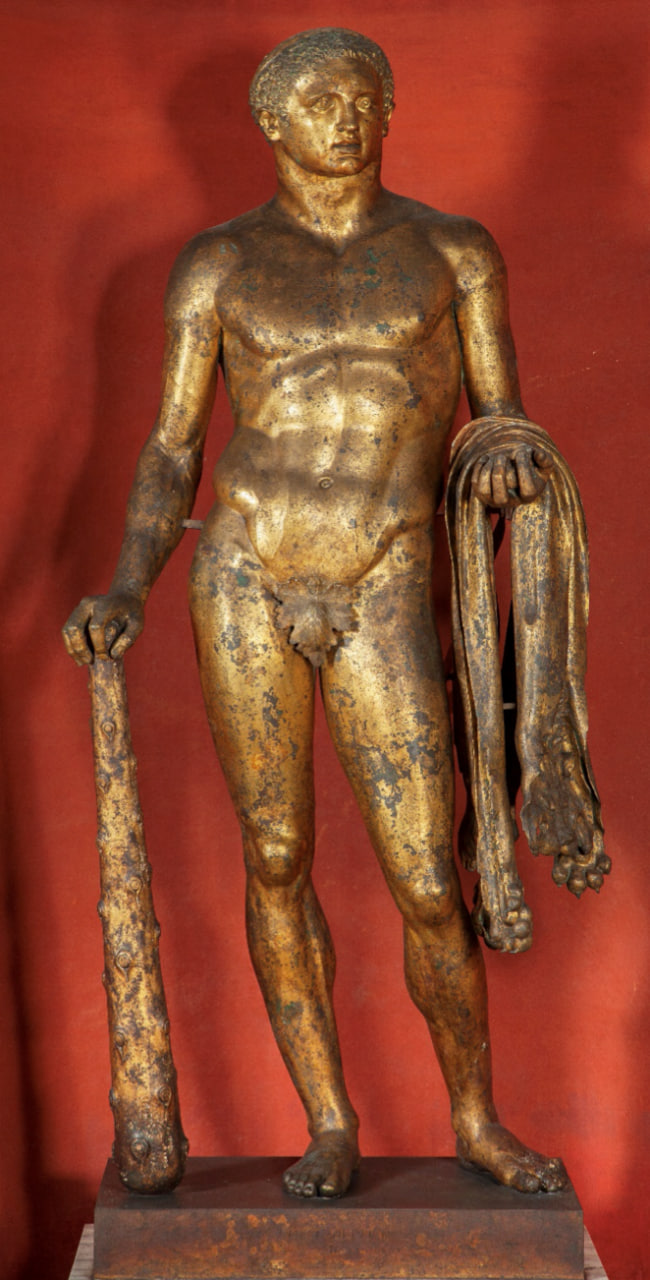
The Beginning of the Discovery
Found in 1864 under the courtyard of Palazzo Pio Righetti, this statue was located in the area of the ancient theater of Pompey, a structure inaugurated in 55 BC.

The Hercules Mastai statue, named after Pope Pius IX Mastai, who received it after its discovery, was found lying horizontally in a pit, covered with travertine slabs inscribed with the letters F C S, abbreviations for F (ulgur) C (onditum) S (ummanium).
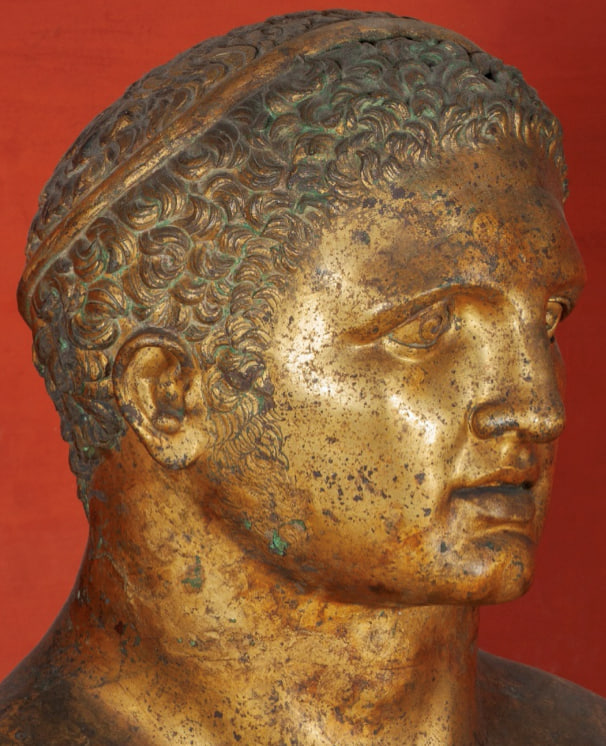
Legend and Ritual
According to Roman legend, the Hercules statue was struck by lightning and was buried along with the remains of a lamb as a ritual. The statue, meticulously restored by Pietro Tenerani with many additions made of plaster, depicts a young Hercules leaning on a club and holding the apples of the Hesperides in his left hand.

Initially, the statue was thought to date from around 390 to 370 BC but has now been re-dated to between the late 1st century AD and the early 3rd century AD.
Features of the Statue
The statue, standing at 3.83 meters high, is made of bronze with heavy gilding. It represents a young Hercules holding a club in his right hand and the apples of the Hesperides in his left hand.
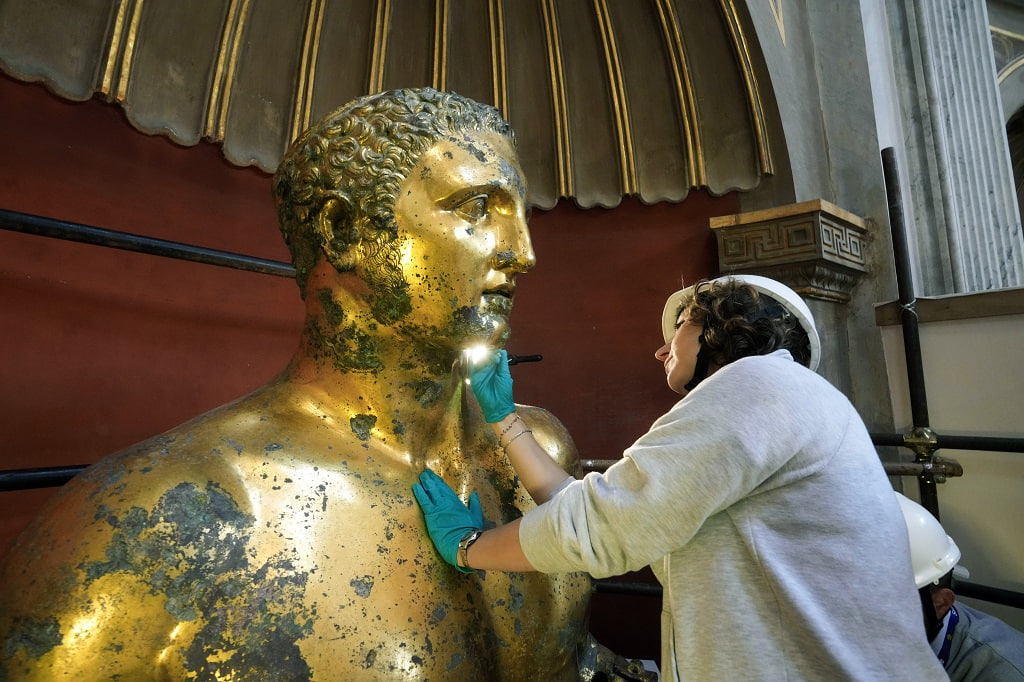
The lion’s skin was found under the back of the statue, but its original place was on the left arm, hanging down to just past the knee. The right arm hangs along the body, connected by a prop, but the club appears to be suspended in the air rather than touching the ground. The feet were detached from the legs, and one leg, as well as the base of the statue, was missing.
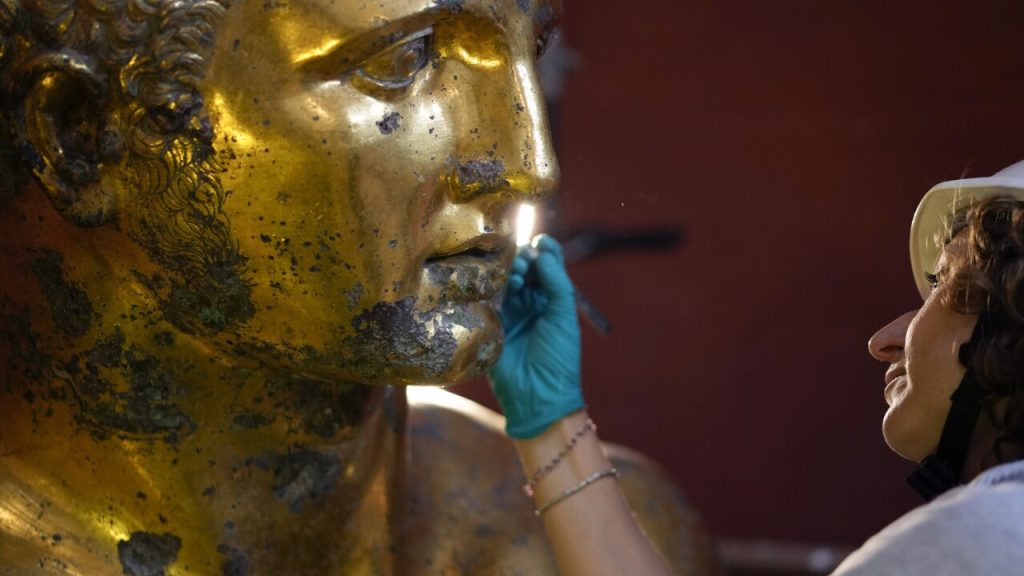
The head was also missing, seemingly cut off to accommodate a crown. There was a break in the bronze, a defect in the casting, at the top of the head, along with the crown, indicating another inserted piece.
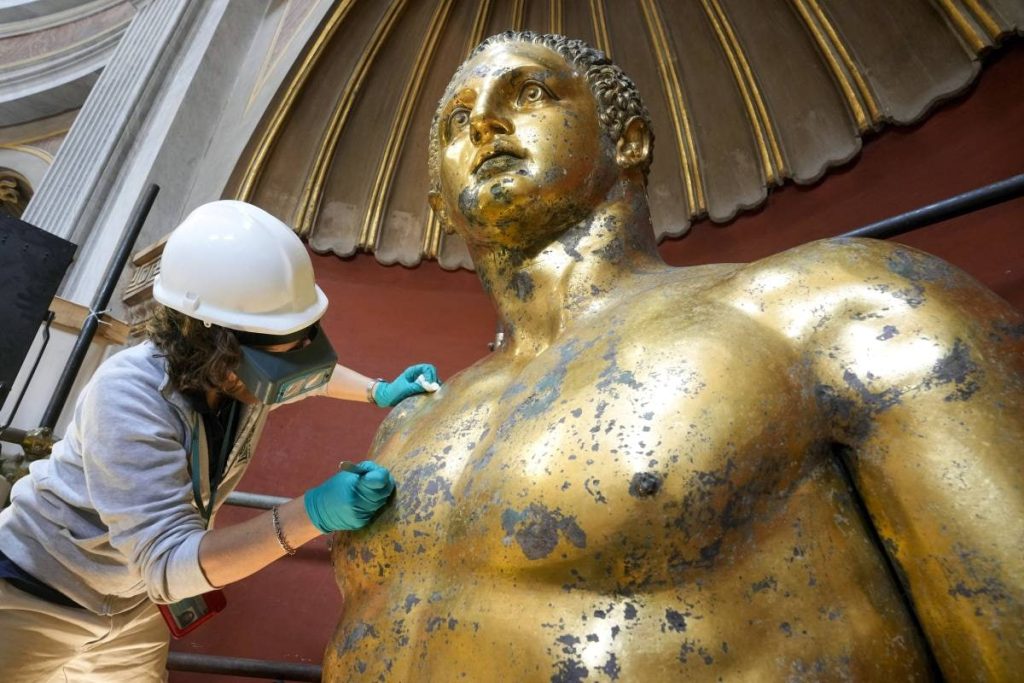
Current Condition and Need for Restoration
Since the statue was placed in the Vatican, no intervention has been made to preserve it. The plaster additions have begun to detach, causing numerous serious issues and accelerating the oxidation of the bronze. Thus, a restoration is necessary.
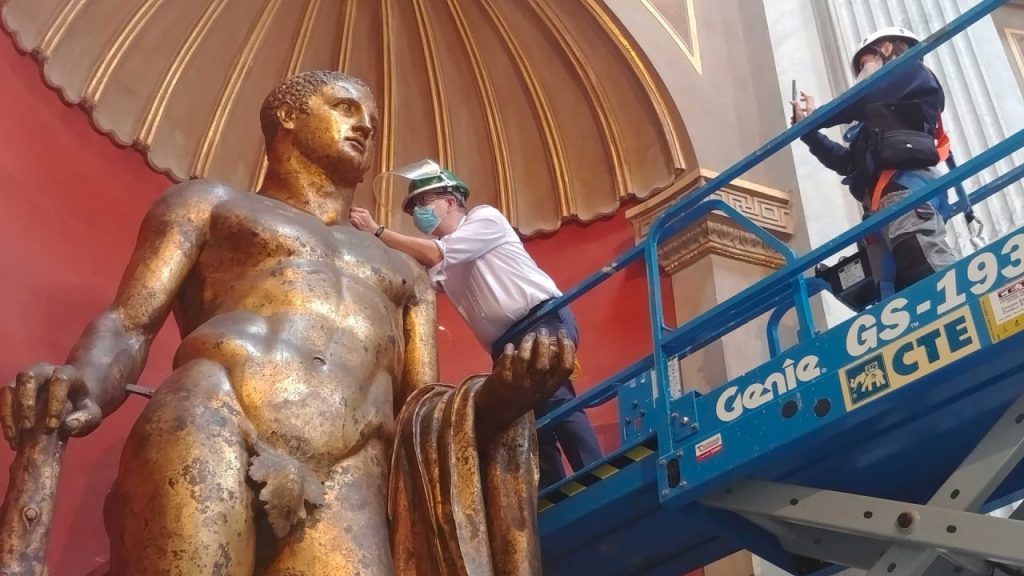
Due to the complexity of this process, it will be preceded by a thorough diagnostic campaign conducted by the Scientific Research Laboratory, according to the indications of the Metal Restoration Laboratory and under the supervision of the Greek and Roman Antiquities Department.
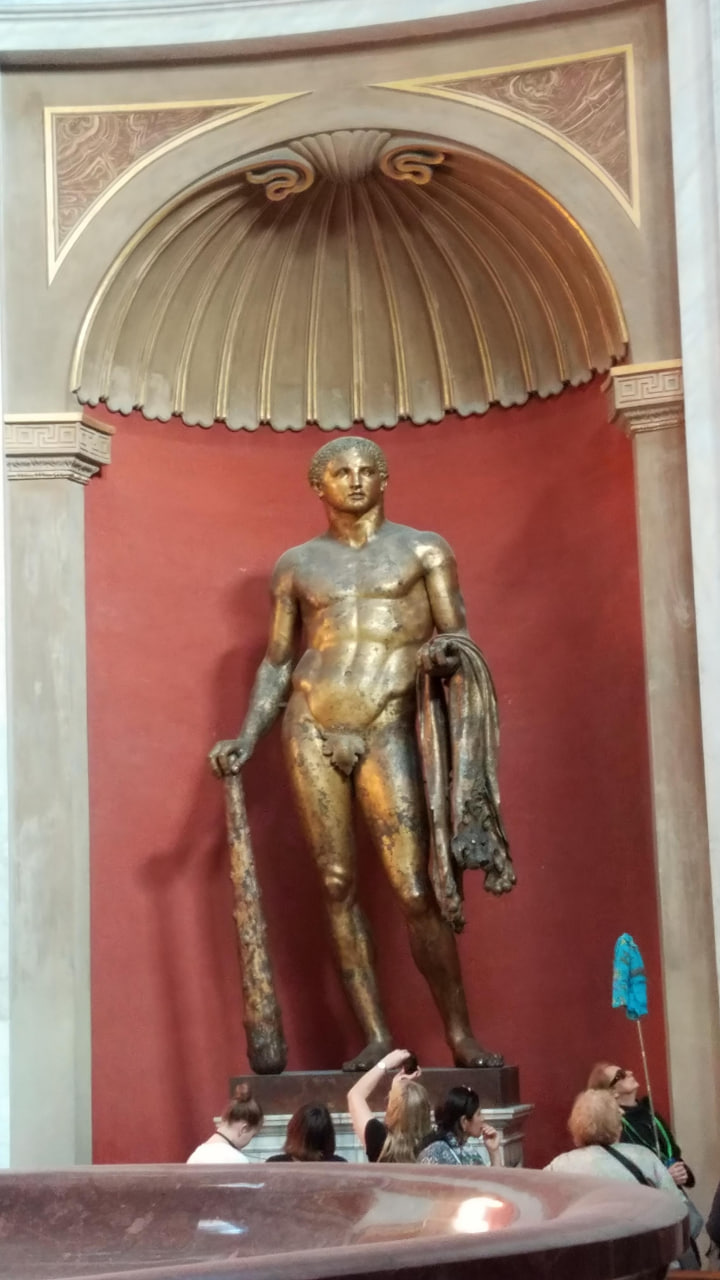
Conclusion and Significance
The journey of discovering and conserving the Hercules Mastai statue is not just a story of archaeology but also a testament to the importance of protecting and maintaining cultural heritage. Thanks to the funding by the Patrons of the Vatican Museums, the restoration work costing around $113,588 will help ensure that the Hercules statue endures, telling the story of a bygone era and inspiring future generations.



